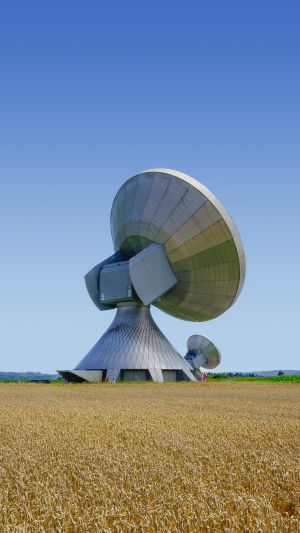With the continuous development of science and technology, human beings' demand for information transmission and global communication is also increasing.
In modern communication systems, satellite communication stations play an important role and become a bridge connecting all parts of the world.
First of all, what is a satellite communication station? Simply put, a satellite communication station is a facility that receives and transmits satellite signals. It consists of a series of antennas, equipment, and control systems designed to establish a communication link between the ground and the satellite.
These stations are usually located at specific locations on the ground to ensure stable communication with the satellites.
The functions of a satellite communication station are very extensive. First, they are responsible for receiving signals from satellites. When satellites transmit data in space, satellite communication stations can receive these signals and pass them on to the appropriate ground facilities or users.
In turn, when ground facilities or users need to send information to the satellite, the satellite communication station can also pass these signals to the satellite for further transmission to other regions.
Secondly, the satellite communication station also undertakes the task of signal forwarding. When a user in one area wants to communicate with a user in another area, the signal usually needs to be forwarded through a satellite communication station.
These stations can take a signal and forward it to a satellite communications station in another area, which in turn relays the signal to the intended user. This forwarding function enables satellite communication stations to realize communication links around the world.
Satellite communication stations have an extremely important position and role in modern society. First, they provide the infrastructure for communication on a global scale. Whether it is a telephone call, Internet data transmission, or TV broadcast, it is inseparable from the support of satellite communication stations.
These sites enable people to conduct real-time voice and data transmission across borders and promote international business cooperation, scientific research, and cultural exchanges.
Second, satellite communication stations are of particular importance for communications in remote and disaster areas. In some remote areas, traditional ground communication facilities may not be able to cover, and satellite communication stations can make up for this lack and provide communication services for residents in these areas.
In the event of a disaster, ground communications facilities may be damaged, and satellite communications stations can be quickly deployed to restore communications, assist rescue efforts and provide humanitarian assistance.
Finally, satellite communication stations also play an important role in scientific research and spaceflight. During a space mission, the satellite communication station is responsible for communicating with the spacecraft and transmitting the data collected by the spacecraft.
These stations enable space missions to be monitored and controlled in real-time, providing the infrastructure for human exploration of the universe. In scientific research, satellite communication stations are also used to receive and transmit observation data, helping scientists in earth observation, weather forecasting, and environmental monitoring.
In conclusion, satellite communication stations play an indispensable role in modern society. They connect all parts of the world and build a bridge for people to communicate.
Whether it is to achieve international business cooperation, provide communication services in remote areas, or support scientific research and space missions, satellite communication stations are promoting the progress of human society.
With the continuous development of technology, we believe that satellite communication stations will play a more important role in the future, creating a more convenient and close global communication network for human beings.





